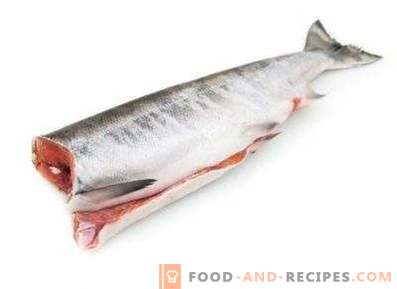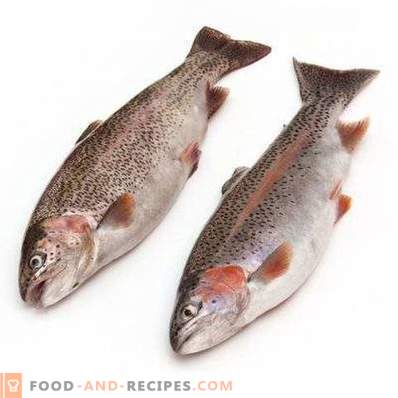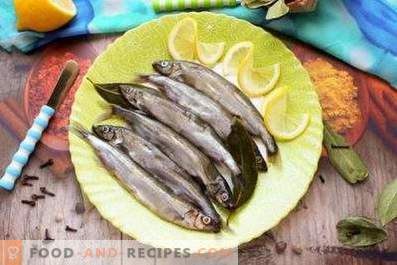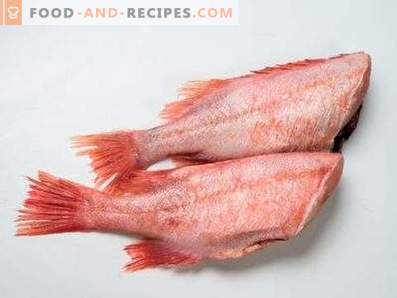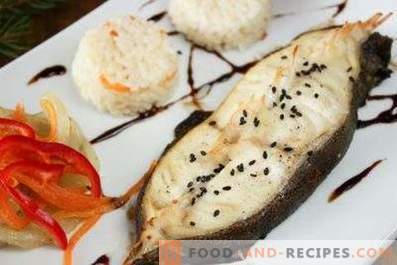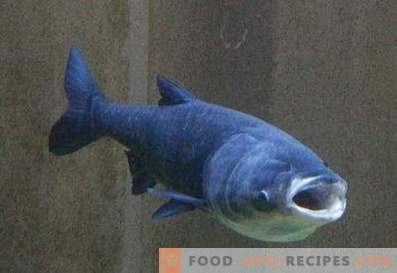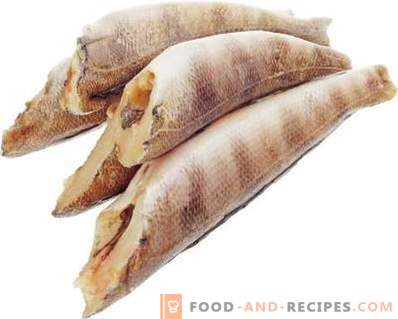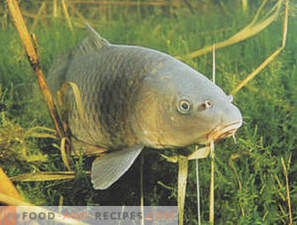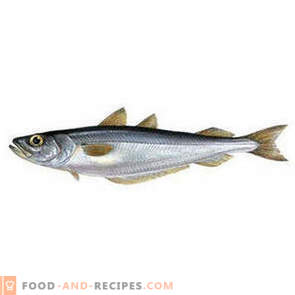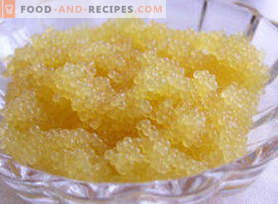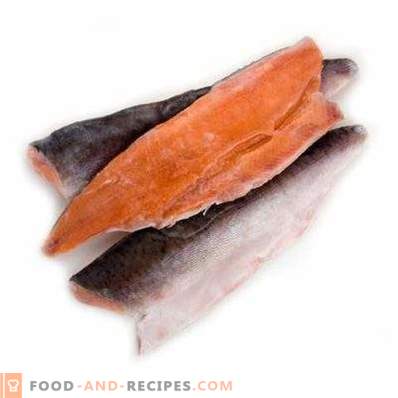
Pink salmon - anadromous fish belonging to the salmon family. Representatives of this species inhabit the cold coastal waters of the Arctic and Pacific Oceans. Adults have an elongated body and a slightly elongated head with a large mouth. The back of the fish is bluish-green or bluish, the belly is white, and the sides are silvery. On the caudal fin, which is V-shaped, there are several dozens of rounded dark spots. Distinctive features of the species are small scales, anal fin with a lot of branched rays, fatty growth, lack of teeth on the tongue and a large number of gill stamens.
Spawn pink salmon once every 2 years. Adult spawners go to spawning grounds (native rivers) in July and August. In the mating season, significant changes occur in the appearance of the fish. A large hump appears on the back of mature males (hence the name of the species). In both sexes, the body acquires a brownish-silver hue, the fins and head darken, rounded black spots appear above the lateral line, the mouth lengthens, large teeth grow, the hook on the upper jaw forms. After spawning, females, spawning eggs, and males that have impregnated it with milk, die.
Pink salmon is a valuable commercial fish. Her meat is fried, stewed, dried, salted, smoked, canned and used for cooking the first courses. In addition, salmon caviar is released from yastika and aged in salmon.
Nutritional Value
100 g of raw pink salmon contains:
- 20, 484 g of proteins;
- 4, 318 g of fat;
- 75, 486 g of water;
- 1, 492 g of ash.
The product contains 10 essential and 8 essential amino acids, saturated, monounsaturated and polyunsaturated fatty acids (for example, in a 100 g serving of fish there is 0,614 mg of omega-3 and 0,094 of omega-6).
Vitamins in the composition of the product
Pink salmon is very rich in vitamins. 100 g of raw fish contains:
- retinol equivalent, A - 34, 897 mkg;
- riboflavin, B2 - 0, 104 mg;
- pantothenate, B5 - 1, 027 mg;
- tocopherol equivalent, E - 0, 388 mg;
- thiamine, B1 - 0, 076 mg;
- choline, B4 - 94, 581 mg;
- cobalamin, B12 - 4, 144 μg;
- phylloquinone, K - 0, 386 mkg;
- pyridoxine, B6 - 0, 609 mg;
- niacin equivalent, PP - 7, 989 mg;
- folic acid, B9 - 3, 917 mcg.
Also in the composition of the product there is a rare vitamin D3 (cholecalciferol). The content of this compound is 10, 877 mcg per 100 g of raw fish.
Useful items
Trace elements in 100 g of pink salmon:
- iron - 0, 376 mg;
- manganese - 0, 012 mg;
- copper - 62, 488 mkg;
- selenium - 31, 328 mg;
- zinc - 0, 389 mg.
Macroelements in 100 g of fish:
- potassium - 367, 029 mg;
- sodium - 74, 687 mg;
- calcium - 6, 772 mg;
- phosphorus - 260, 922 mg;
- magnesium - 26, 533 mg.
Caloric content of pink salmon
The energy value of 100 g of raw pink salmon is 126, 908 kcal. In the same portion of boiled fish - 167, 447 kcal, stewed - 151, 385 kcal, fried - 204, 277 kcal, salted - 168, 416 kcal, pickled - 139, 816 kcal. Calorie salmon cold and hot smoked - 163, 772 kcal per 100 g. In a hundred gram portion of the soup of this fish contains 46, 881 kcal.
Useful properties of pink salmon
- Regular consumption of snacks and pink salmon dishes helps to replenish vitamins, minerals and other useful nutrients in the body in a timely manner.
- The compounds present in the composition of this fish activate the brain, improve the ability to concentrate for a long time on solving the set tasks.
- Antioxidants, which are rich in pink, slow down the aging of internal organs and tissues, minimize the negative impact of the environment on the human body.
- Regular consumption of food from pink salmon helps strengthen the nervous system and eliminate minor disruptions in its work.
- The compounds contained in this fish normalize the function of the endocrine glands.
- Pink salmon is useful for people suffering from diseases of the cardiovascular system. Substances entering the body by consuming this fish strengthen the myocardium, give strength and elasticity to blood vessels, maintain blood pressure within normal limits, prevent arrhythmia, reduce the concentration of cholesterol in the blood, prevent the formation of atherosclerotic deposits.
- Dishes from pink salmon help strengthen the immune system, increase the body's natural resistance to parasitic, viral, bacterial and fungal infections, reduce the susceptibility to colds.
- Proteins contained in pink salmon are easily absorbed by the body. That is why this fish is often included in the diet menu for athletes and those engaged in heavy physical labor, people recovering from prolonged illness or serious injury.
- Calcium and other substances with which pink salmon is rich help to strengthen the bones and reduce the risk of diseases of the musculoskeletal system.
- Dishes from pink salmon accelerate lipid, protein and carbohydrate metabolism in the body, contribute to weight loss.
- Useful compounds contained in pink, normalize the thyroid gland.
- Studies have shown that substances present in the composition of this fish can reduce the concentration of sugar in the blood. That is why dishes from it are useful to persons who have been diagnosed with diabetes.
- In people who regularly include pink salmon in their diet, their skin, nails, teeth, mucous membranes and hair condition improves.
Contraindications and harm of pink salmon
- Dishes of pink salmon can trigger the development of allergic reactions.
- People suffering from chronic diseases of the gastrointestinal tract and liver should sharply limit the consumption of this fish. Otherwise, the disease can go into the acute stage.
- Pink salmon is contraindicated in people who have previously identified individual intolerance to iodine and phosphorus.
- Persons suffering from cardiac diseases should minimize the consumption of salted and smoked pink salmon.
- Pediatricians do not recommend to introduce dishes of pink salmon in the diet of children under 1, 5 years.
